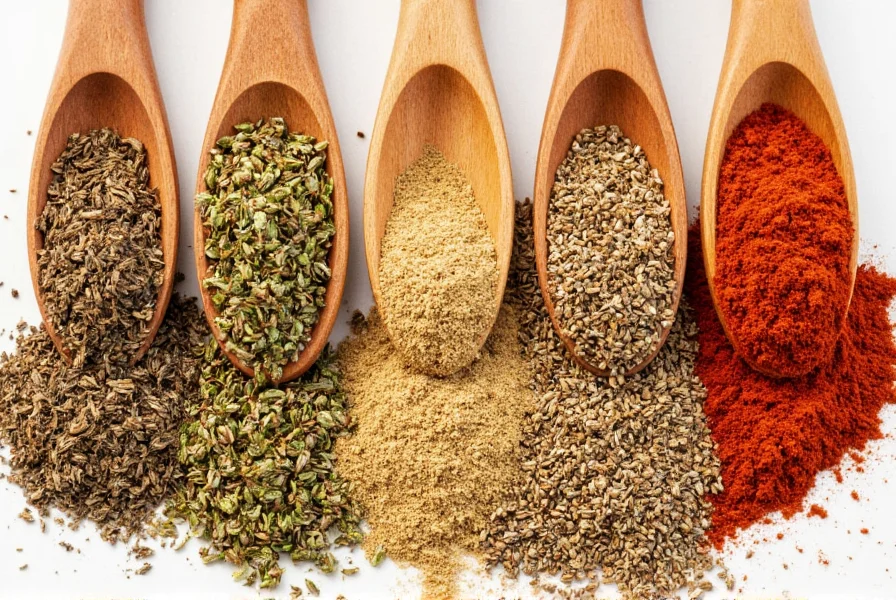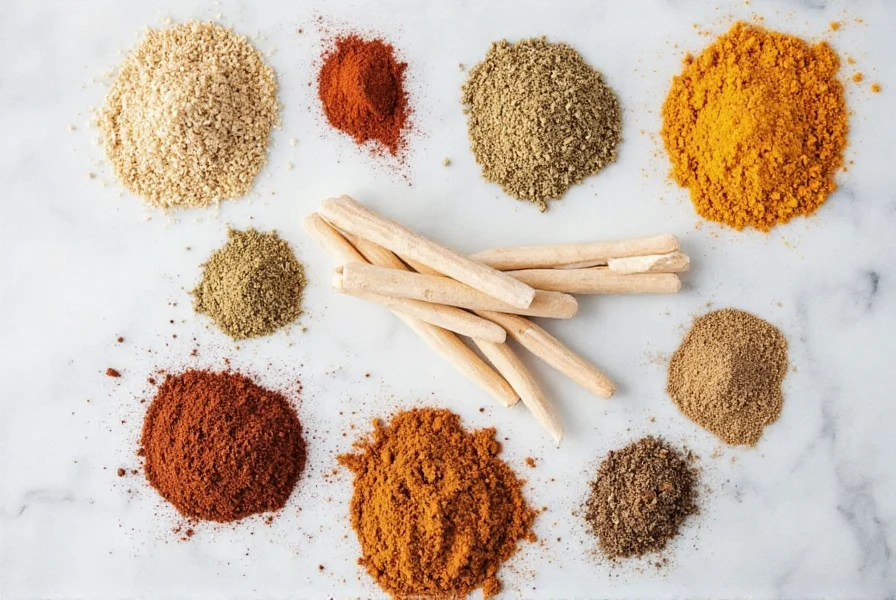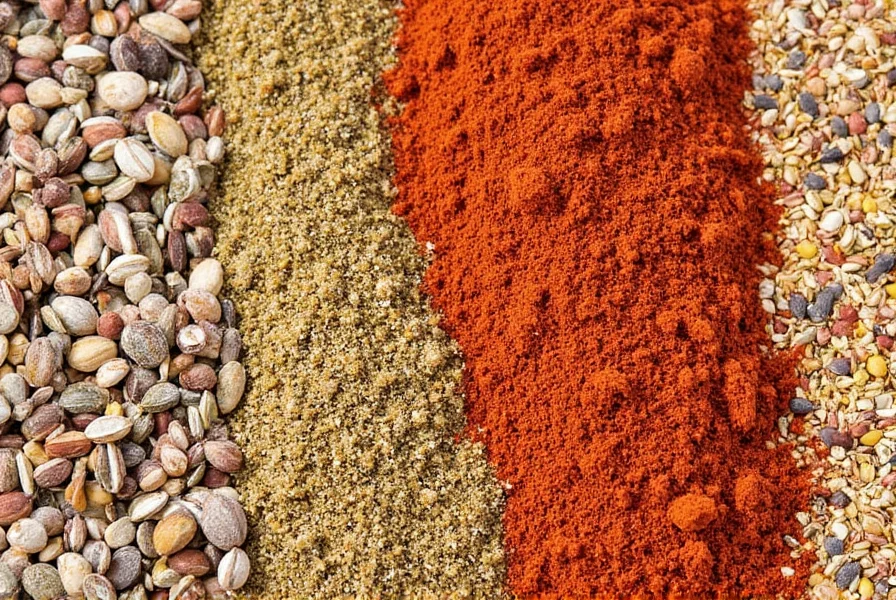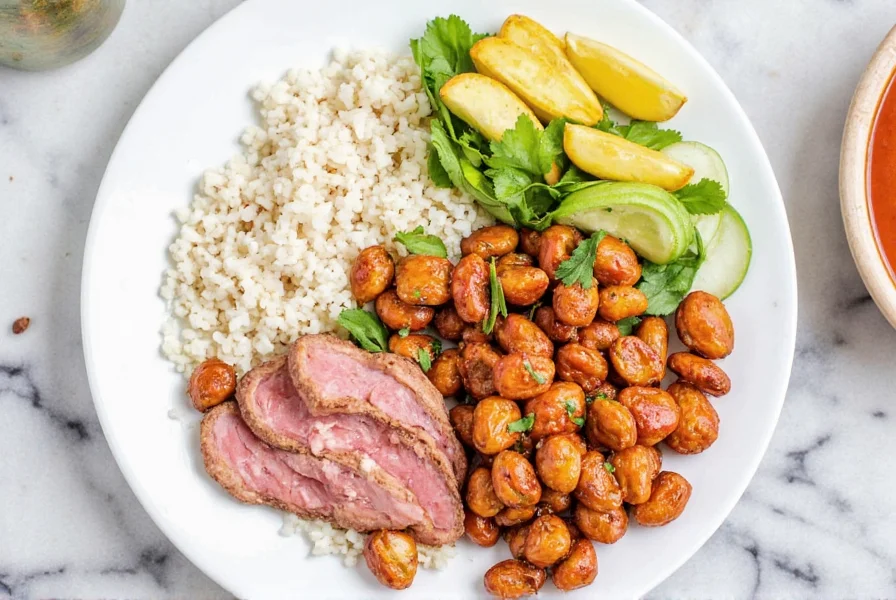Table of Contents
- How to Balance Savory and Spicy Flavors Correctly
- Understanding Savory vs Spicy: Key Differences
- Proven Techniques for Perfect Flavor Balance
- Common Mistakes When Balancing Flavors
- Savory and Spicy Spice Profiles Explained
- Effective Flavor Combinations for Home Cooking
- Troubleshooting: Fixing Imbalanced Dishes
- Frequently Asked Questions
How to Balance Savory and Spicy Flavors Correctly
When your dish needs perfect flavor balance, start with this proven method: for every 1 teaspoon of spicy ingredient (like chili powder or cayenne), add ½ teaspoon of savory element (such as garlic powder or umami-rich ingredients) plus a pinch of acid (lemon juice or vinegar). This 2:1 savory-to-spice ratio creates harmony without overwhelming either profile. The acid component is crucial—it cuts through heat while enhancing savory notes. Always add spices gradually, tasting after each addition, as you can't remove excess heat once incorporated.





Understanding Savory vs Spicy: Key Differences
Many home cooks confuse savory and spicy elements. Savory flavors provide depth and umami (the fifth taste), primarily coming from ingredients rich in glutamates and nucleotides. Spicy refers specifically to the heat sensation caused by capsaicin in chili peppers and related compounds.
| Flavor Type | Chemical Basis | Common Ingredients | Heat Level (Scoville) |
|---|---|---|---|
| Savory (Umami) | Glutamates, Inosinate, Guanylate | Garlic, onions, mushrooms, soy sauce, aged cheeses | 0 (no heat) |
| Spicy (Heat) | Capsaicin, Piperine | Chili peppers, black pepper, ginger (in high amounts) | Varies (100-2,000,000+) |
| Pungent (Often Confused with Spicy) | Allicin, Mustard oils | Raw garlic, onions, horseradish, mustard | 0 (no actual heat) |
Proven Techniques for Perfect Flavor Balance
Professional chefs use these specific methods when balancing savory and spicy elements:
- The Layering Method: Add 25% of your planned spices at the beginning of cooking, 50% midway, and 25% near the end. This creates depth while preventing overpowering heat.
- The Ratio System: Maintain a 3:2 savory-to-spicy ingredient ratio by volume. For example, 3 parts cumin (savory) to 2 parts cayenne (spicy).
- Temperature Control: Add spicy elements when oil is medium-hot (325°F/163°C), but add savory elements when oil is cooler (275°F/135°C) to prevent bitter notes.
- Acid Balancing: For dishes that become too spicy, add 1 teaspoon of acid (lemon juice, vinegar) per cup of liquid to cut heat without diminishing flavor complexity.
- Dairy Integration: When serving immediately, swirl in 2 tablespoons of full-fat yogurt or coconut milk per serving to tame excessive heat while enhancing savory notes.
Common Mistakes When Balancing Flavors
Avoid these frequent errors that ruin flavor balance:
- Mistake: Adding all spices at once Solution: Layer spices throughout cooking process as described above
- Mistake: Using heat measurement alone to balance Solution: Balance both heat intensity AND flavor depth—spicy without savory depth tastes one-dimensional
- Mistake: Over-relying on sugar to counter heat Solution: Use acid (1:1 acid-to-sugar ratio) for more sophisticated balancing
- Mistake: Confusing pungent flavors (garlic, onion) with spicy heat Solution: Remember these provide aroma and bite but don't register as "heat" on Scoville scale
Savory and Spicy Spice Profiles Explained
Understanding each spice's contribution is essential for precise balancing:
| Spice | Flavor Profile | Heat Level | Best Pairings | Proportion Tip |
|---|---|---|---|---|
| Cumin | Earthy, warm, slightly bitter | 0 (savory) | Chili powder, coriander, garlic | 1 part cumin : 1.5 parts chili powder |
| Garlic | Pungent, sweet when cooked | 0 (savory) | Black pepper, paprika, cumin | 3 cloves per 1 tsp chili flakes |
| Black Pepper | Sharp, floral, woody | Medium (piperine) | Salt, thyme, savory herbs | ½ tsp per 1 tsp savory spices |
| Chili Powder | Smoky, earthy, variable heat | Medium-High | Cumin, oregano, garlic | Start with ¼ tsp per serving |
Note: Saffron contributes color and floral notes but no heat—it's strictly a savory/aromatic spice, often mistakenly categorized as spicy.
Effective Flavor Combinations for Home Cooking
These professionally tested combinations deliver perfect balance:
| Combination | Ratio | Ideal Dishes | Timing Tip |
|---|---|---|---|
| Garlic + Cayenne | 3:1 garlic to cayenne | Stir-fries, roasted vegetables | Add garlic first, cayenne 2 minutes later |
| Cumin + Chili Powder | 2:1 cumin to chili powder | Tacos, chili, curries | Bloom both in oil simultaneously |
| Black Pepper + Paprika | 1:2 pepper to paprika | Grilled meats, soups | Add pepper early, paprika late |
Troubleshooting: Fixing Imbalanced Dishes
When your dish misses the mark, use these precise solutions:
- Too Spicy, Not Savory Enough: Add 1 tablespoon tomato paste + ½ teaspoon soy sauce per cup of liquid. Simmer 5 minutes. Never add more spicy elements.
- Too Savory, Lacking Depth: Create a "flavor bomb"—sauté 1 minced garlic clove in 1 tsp oil until golden, then add ¼ tsp chili flakes. Stir into dish.
- Heat Overwhelms Other Flavors: Add 1 teaspoon acid (lemon/vinegar) + 1 teaspoon sweetener (honey/maple syrup) per cup. The 1:1 acid-sweet ratio preserves balance.
- Spice Has Burnt Taste: Add 2 tablespoons dairy (yogurt/coconut milk) and 1 teaspoon fresh citrus zest to mask bitterness while maintaining heat level.
Frequently Asked Questions About Flavor Balancing
What's the exact ratio for balancing savory and spicy flavors in chili?
For authentic chili balance, use this precise ratio: 2 parts cumin (savory) to 1.5 parts chili powder (spicy) to 0.5 parts acid (tomato paste or vinegar). Example: 2 tbsp cumin, 1½ tbsp chili powder, and ½ tbsp vinegar per pound of meat. This creates depth without overwhelming heat.
How can I fix a dish that's too spicy without losing flavor?
Add acid before dairy—1 teaspoon lemon juice or vinegar per cup of liquid lowers perceived heat by 30% without masking flavors. If still too spicy, then add 1 tablespoon full-fat yogurt per serving. Never use sugar alone, as it creates unbalanced sweetness. The acid-dairy combination preserves savory depth while reducing heat intensity.
Why does my spicy dish taste flat even with multiple spices?
This happens when you have spicy elements without sufficient savory foundation. Spicy flavors need umami-rich components to create depth. Add 1 teaspoon soy sauce or 2 tablespoons tomato paste per cup of liquid to build the savory base, then adjust spicy elements. Proper layering—adding savory elements first, spicy elements later—creates multidimensional heat.
What's the difference between 'spicy' and 'pungent' in cooking terms?
'Spicy' specifically refers to heat from capsaicin (chili peppers) measured on Scoville scale. 'Pungent' describes sharp, aromatic heat from compounds like allicin (garlic/onions) or mustard oils that don't register as 'heat' but provide bite. Pungent flavors enhance without actual spiciness—crucial for building complex profiles without overwhelming heat.
How do professional chefs measure spice levels accurately?
Chefs use the 'taste and adjust' method with precise increments: add spices in ⅛ teaspoon increments, simmer 3 minutes, then taste. For consistent results, they maintain ratios: 3 parts savory (cumin, garlic) to 2 parts spicy (chili powder) to 1 part acid. Digital thermometers ensure oil is at 325°F when adding spicy elements to prevent bitterness.
Can I balance flavors after a dish is fully cooked?
Yes, but with limitations. For finished dishes, use quick-acting solutions: 1 tsp acid (lemon juice) per cup cuts heat by 30% immediately. For savory depth, stir in 1 tbsp tomato paste per cup and let sit 10 minutes. Dairy (yogurt/coconut milk) works instantly but alters texture. Remember: prevention through proper layering is always better than correction.











 浙公网安备
33010002000092号
浙公网安备
33010002000092号 浙B2-20120091-4
浙B2-20120091-4